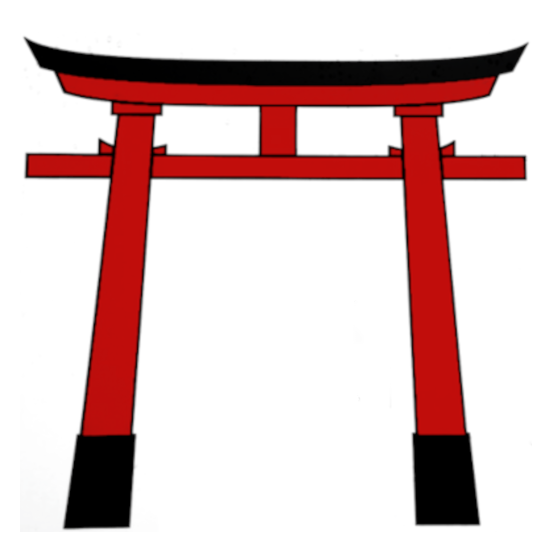| Meaning |

use 用
|
| Explanation |
The radical mochiiru shows originally the picture of a fence.
|
Used in these characters:
|
|
通
|
 |
|
JLPT 4Joyo 2 |
|
| pass, commute, communicate
tōru, kayou, TSŪ
辶
マ
用
 |
|
Left: movement 辶, right: 甬 (bent person マ, and use/usage 用 (= A fence 用 can be used.)
The bent person uses movement for passing through (commuting).

|
|
|
|
用
|
 |
|
JLPT 4Joyo 2 |
|
| use
mochiiru, YŌ
用
 |
|
Looks like a fence
A fence can be used.

|
|
|
|
備
|
 |
|
JLPT 2Joyo 5 |
|
| equipment, prepare, possess
sonaeru/waru, BI
亻
艹
厂
用
 |
|
Left: person 亻/人, right: plant 艹, cliff 广, use 用
The person picks up plants from the cliff for use as equipment.

|
|
|
|
痛
|
 |
|
JLPT 2Joyo 6 |
|
| pain, ache, hurt
itai/mu/meru, TSŪ
疒
マ
用
 |
|
Top: sick 疒 (An ice-冫-cold building 广 makes sick.), below: 甬 = bent person マ, use 用 (image of a fence)
The disease, when somebody is hanging bent over a fence is painful.

|
|
|
|
補
|
 |
|
JLPT 2Joyo 6 |
|
| supplement, assist, supply, make good
oginau, HO
衣
甫
用
 |
|
Left: clothes 衤/衣, right: begin 甫 (Image of the upper body with shoulders 一 and chest 月 with spine 丨and an object 丶)
Clothes are the objects for the upper body for providing: supplement.

|
|
|
|
捕
|
 |
|
JLPT 2Joyo 7 |
|
| capture, seize, catch, grasp
toru/raeru, tsukamaru/maeru, HO
扌
甫
用
 |
|
Left: hand 扌, right: to begin 甫 (Image of the upper body with shoulders 一 and chest 月 with spine 丨 and an object 丶)
You need your hand and upper body when: capturing or catching.

|
|
|
|
浦
|
 |
|
JLPT 1Joyo 7 |
|
| coast, inlet, bay, seashore
|
Left: water 氵, right: to begin 甫 (Image of upper body with shoulders 一 and chest 月 with spine 丨 and a head 丶)
The water, where you can stand such that the upper body is still seen is at the: coast or bay.

|
|
|
|
舗
|
 |
|
JLPT 1Joyo 7 |
|
| shop, store, pave
|
Left: lodge, accommodation 舎 (...with a roof  over the ground 土 and an entrance 口), right: to begin 甫 (image of an upper body with shoulders 一 and chest 月 with spine 丨 and an object 丶) over the ground 土 and an entrance 口), right: to begin 甫 (image of an upper body with shoulders 一 and chest 月 with spine 丨 and an object 丶)
The lodge for objects 丶 with a sales agent (= upper body) is a shop.

|
|
|
|
庸
|
 |
|
JLPT 1Joyo 7 |
|
| ordinary, work, mediocre
|
Outside: building 广, below: hand ナ/ヨ, holding a pestle 丨, combined with use 用 [A fence 用 can be used.]
In a building a hand uses a pestle, which is very ordinary.

|
|
|
|
踊
|
 |
|
JLPT 2Joyo 7 |
|
| dance
odoru, YŌ
足
マ
用
 |
|
Left: foot 足 (kneecap 口 and a footprint 止), right: var. of pass 通 The bent マ person uses/needs 用 movement 辶 for passing/ commuting.)
The foot of the bent person is used when: dancing.

|
|
|
|
猟
|
 |
|
JLPT 1Joyo 7 |
|
| hunting
|
Left: wild animal 犭(dog on hind legs), right: variation of claws 爪, use 用 (A fence 用 can be used)
(For example, the hound:) Animals with claws are used for hunting.

|
|
|
|
柵
|
 |
|
JLPT -Joyo 7 |
|
| fence, railing, barrier
|
Left: tree 木, right: bundle of bamboo writing tablets/book volume 冊 (here: image of a fence)
Made of wood and looking like a fence: A fence.

|
|
|
|
哺
|
 |
|
JLPT -Joyo 7 |
|
| suckle, breast feeding
|
Left: mouth 口, right: to begin 甫 (Here: image of an upper body with shoulders 一 and chest 月 with spine 丨 and a small baby 丶)
The mouth at the upper body is breastfed.

|
|
|
| Radicals are shown here that are similar either in appearance or meaning. |  |
|
At this page you get the memory phrases for learning the Japanese Kanji. If you are learning the Chinese Hanzi, please follow this link. |
List of the characters |
List of the radicals
|

